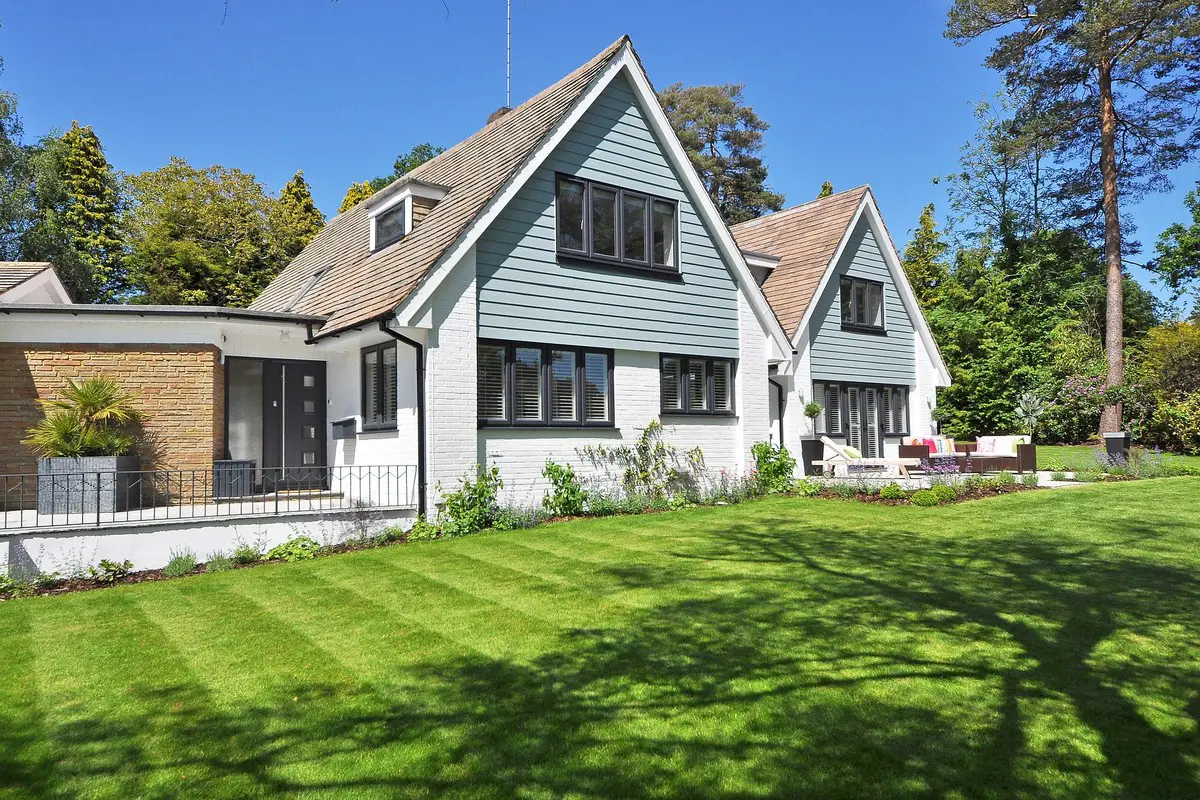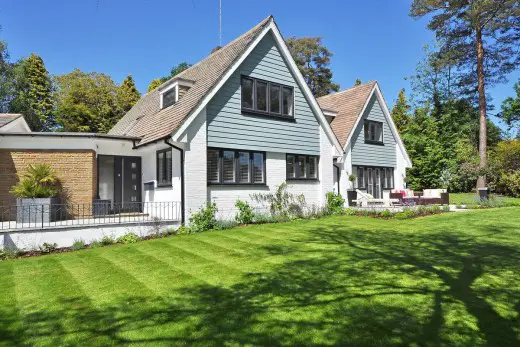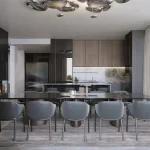7 ways to make your house more environmentally friendly advice, Home eco tips, Sustainable property guide
7 Ways To Make Your House More Environmentally Friendly Guide
2 February 2022
The world is currently undergoing a great deal of climate change – much of which has been provoked by human interference with the environment. Life on earth is set to become harder for animals, plants, and human beings alike in the coming years if changes in the way we live are not implemented very quickly. Homeowners can adapt their properties in order to have less of a damaging environmental impact. Here are a few ways in which they can do so.
7 Ways To Make Your House More Environmentally Friendly List
Paint Smart
The way you paint your home can actually have a big impact on the amount of energy you might need to use in heating and cooling your property. This is not a new concept. In hot countries, people have traditionally painted the exterior of their homes in light, reflective colours. On some Greek islands, for instance, it is rare to find a house that has not been whitewashed in part to protect occupants against the scorching heat of the sun. Paint or whitewash can be incredibly effective at reflecting light and heat. This can prevent you from needing to constantly run environmentally damaging air conditioning units and will also save you money on electricity bills.
Modern heat reflective paint is even better at keeping houses cool than whitewash. It is often made using a ceramic mix that is very heat-reflective.
Double Glaze
Double glazing your windows can save you money and make your house more environmentally friendly at the same time. Double glazing was almost certainly invented in the United States in the 1930s, although there is some evidence to suggest that it was being used since the Victorian era in Scotland. Double glazing is primarily useful for heat retention.
Double glazing does not just mean that there are two layers of glass. The space in between the two panes is filled with argon gas. Argon gas is a very poor conductor of heat, meaning that heat has trouble escaping the room in which the double glazing has been installed. Although double glazing installation is typically quite expensive, options are designed to help people get more efficient homes, which will also save on heating bills. For help finding replacement windows it is worth contacting your local installer to see what funding options are available.
If you live in a cold part of the country, then you are likely to see financial savings as a result of double glazing installation within a few years.
For instance, Edinburgh is known for its cold and windy weather. In these conditions, houses with single-glazed windows can lose up to 20% of their heat through windows and doors alone. Fortunately, the double glazing sold in Edinburgh is among the best in the UK, designed to withstand extreme weather conditions. With a wide range of options and styles, homeowners can find the perfect fit for their homes while also improving energy efficiency.
Make Use Of Renewables
Although the national power grid still makes use of fossil fuels to an alarming degree, that does not mean that you cannot use localised renewable energy in your own home. Roof-mounted solar panels are one of the most popular ways of supplementing your energy supply through environmentally friendly means. There are many government schemes that help homeowners partially fund the installation of solar panels on the roofs of their homes.
Wind power is also popular, although most homeowners would struggle to generate enough power using wind to make a dent in their consumption of fossil fuel generated electricity.
Build Using Recycled Material
Recycled and reclaimed materials are often perfectly good for building and decorating. They can also add a fascinating aesthetic palimpsest to a home. Stone is an especially good material to recycle, as is brick. Mining and shaping stone is an incredibly environmentally damaging process. A great deal of stone used in housebuilding is imported, which further increases its environmental impact. A good material salvage yard will help you or your building contractor find stone saved during the ever-shifting processes of demolition and building that influence today’s material culture.
As well as recycled stone and brick, recycled plastics have found their way into the architectural palate. Some enterprising architects have developed methods for using recycled plastics to create insulation and even structural elements. Recycled copper pipes and fittings are also environmentally friendly ways of fitting out a home.
Buy Energy Efficient Appliances
Appliances such as washing machines and fridges tend to guzzle up a great deal of electricity and are very rarely turned off. Until electricity can be produced entirely from renewable sources then the use of it will be bad for the environment. A great deal of the electricity we use is generated by burning fossil fuels in order to drive turbines. This method releases a great deal of carbon dioxide into the atmosphere, which can influence the environment.
Many companies offer purportedly energy-efficient appliances, but it is always worth checking out the actual energy use statistics and third-party reviews before trusting an appliance manufacturer’s word.
Use Sustainable Woods
Some woods are far less sustainable than others and should be avoided when constructing or fitting out your home. Burmese Teak, for instance, is very unsustainable. Ebony is also considered incredibly bad for the environment. Fast-growing trees such as pine are known to be the best for the environment, although sustainably grown oak can also be good. Make sure to check whether the wood you are buying is from a forestry commission approved source, which will ensure its sustainability.
Reduce Water Use
Modern human use of water is not without environmental consequences. Water takes a huge amount of energy to filter and transport. In turn, this produces environmental degradation that provokes droughts, making filtering and transporting water even more energy draining. This vicious cycle is one of the main reasons that the world is teetering on the brink of a massive water crisis that could leave many millions of people without access to the stuff of life.
There are several ways in which you can reduce water use in your home. One of the easiest and most effective is to place a brick or similarly sized object in your toilet cisterns. This saves a large amount of water with each flush but should not impede the functionality of your porcelain throne. More high-tech measures are also available. Water-saving taps are all the rage and can save vast quantities of liquid every year. Likewise, it is worth investing in an efficient showerhead.
Comments on this guide to 7 ways to make your house more environmentally friendly article are welcome.
Edinburgh Architecture
Contemporary Scottish Capital Property Designs – recent architectural selection below:
Quartermile flats, off the Meadows / Lauriston Place
Quartermile flats
Rowanbank Gardens Edinburgh Housing
West Town Edinburgh Property Vision
Comments / photos for the 7 ways to make your house more environmentally friendly page welcome





